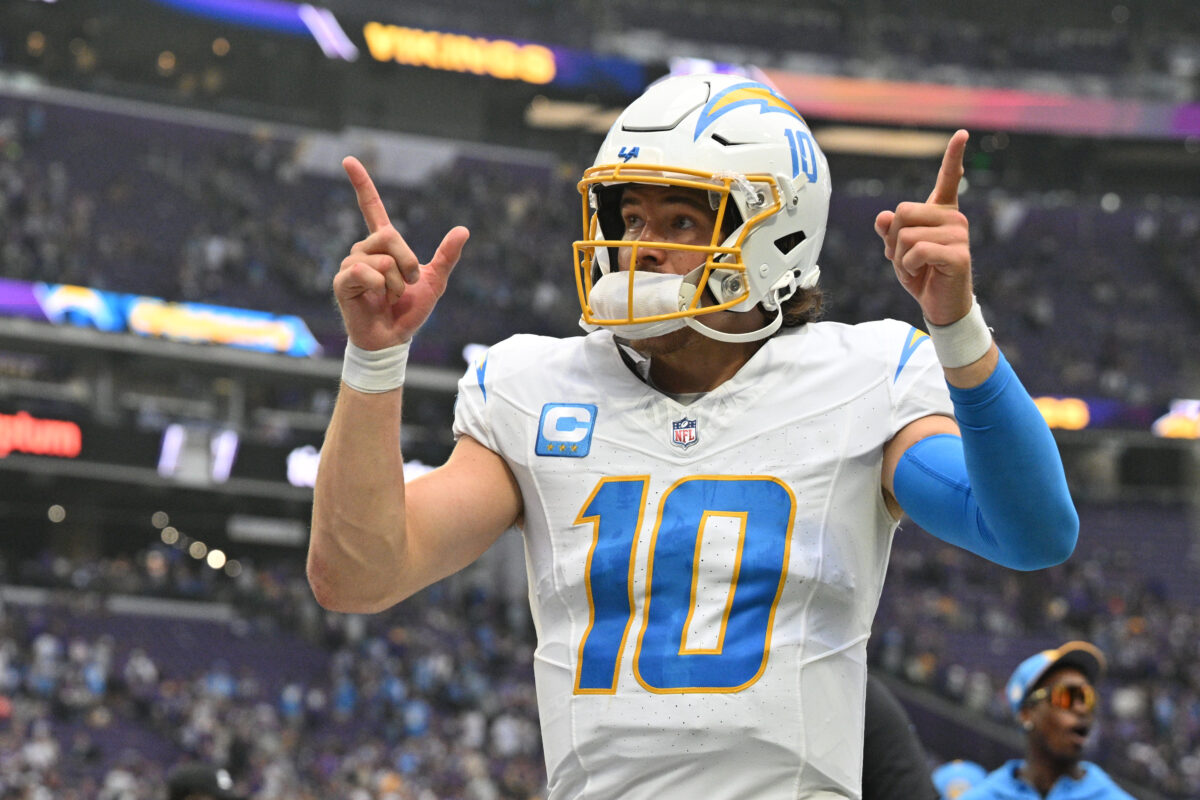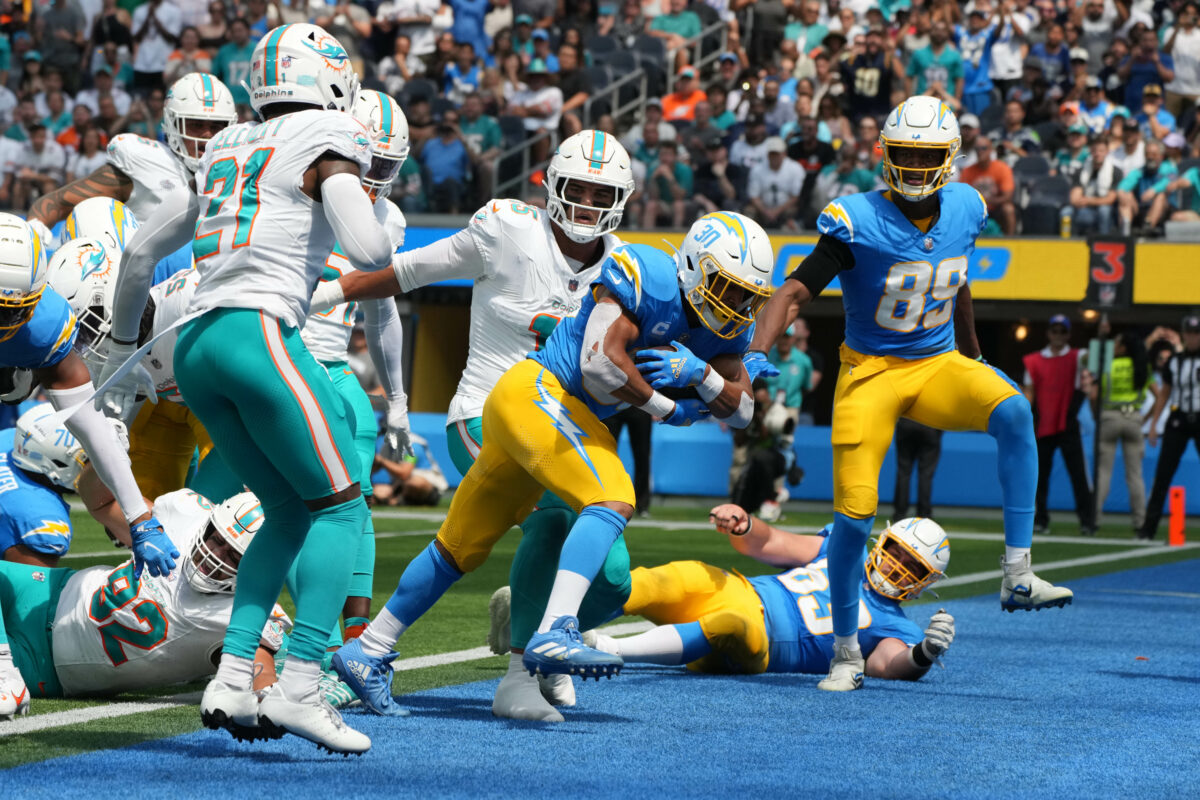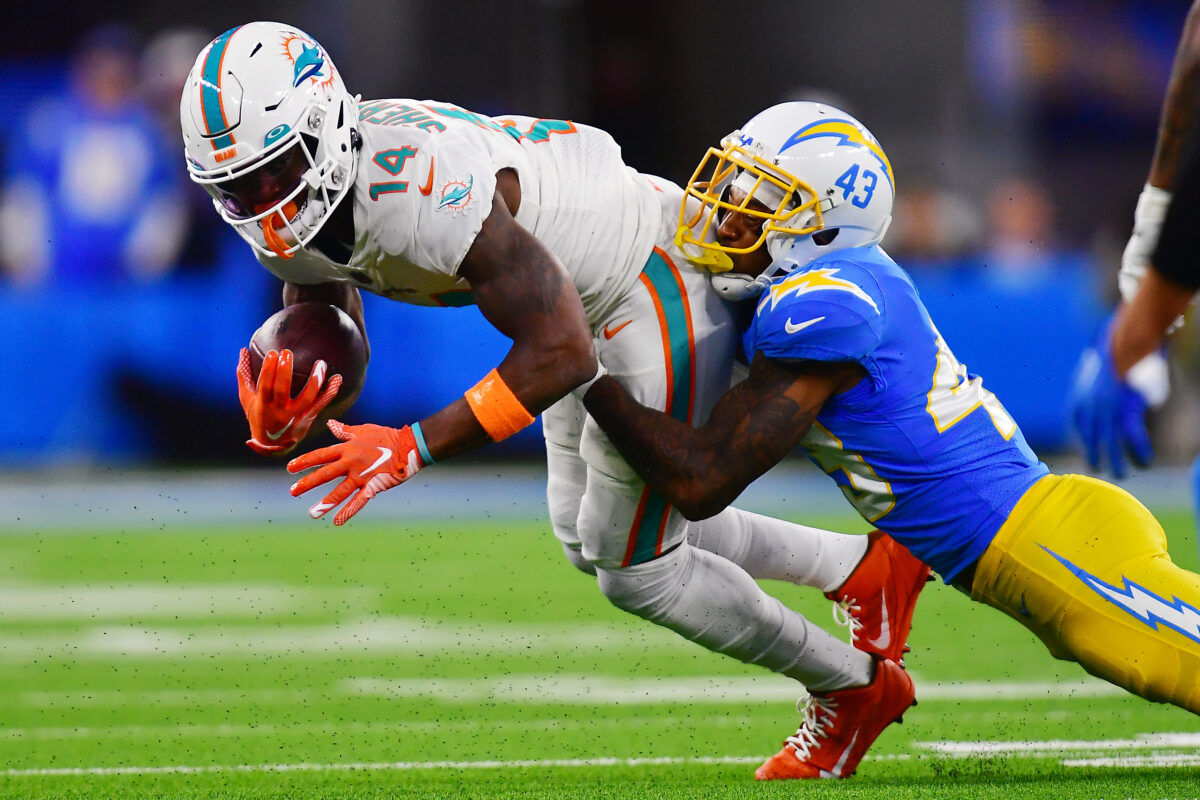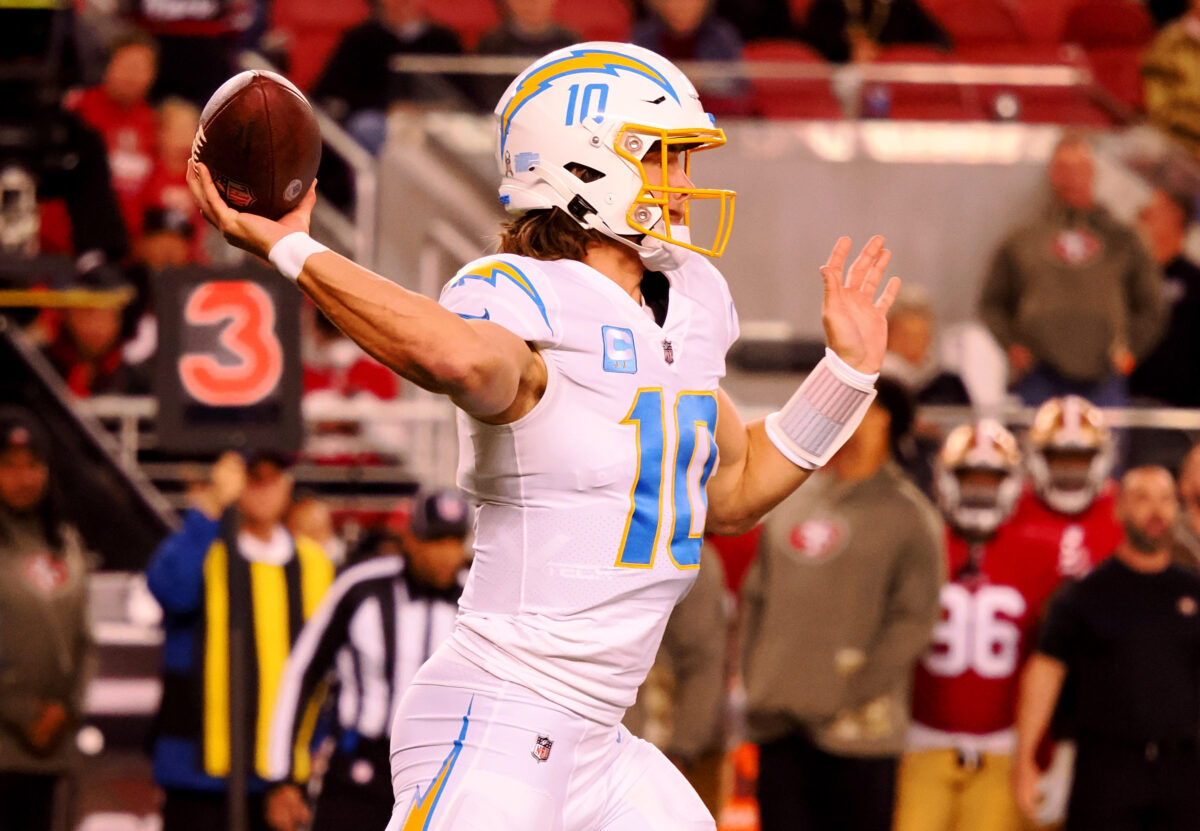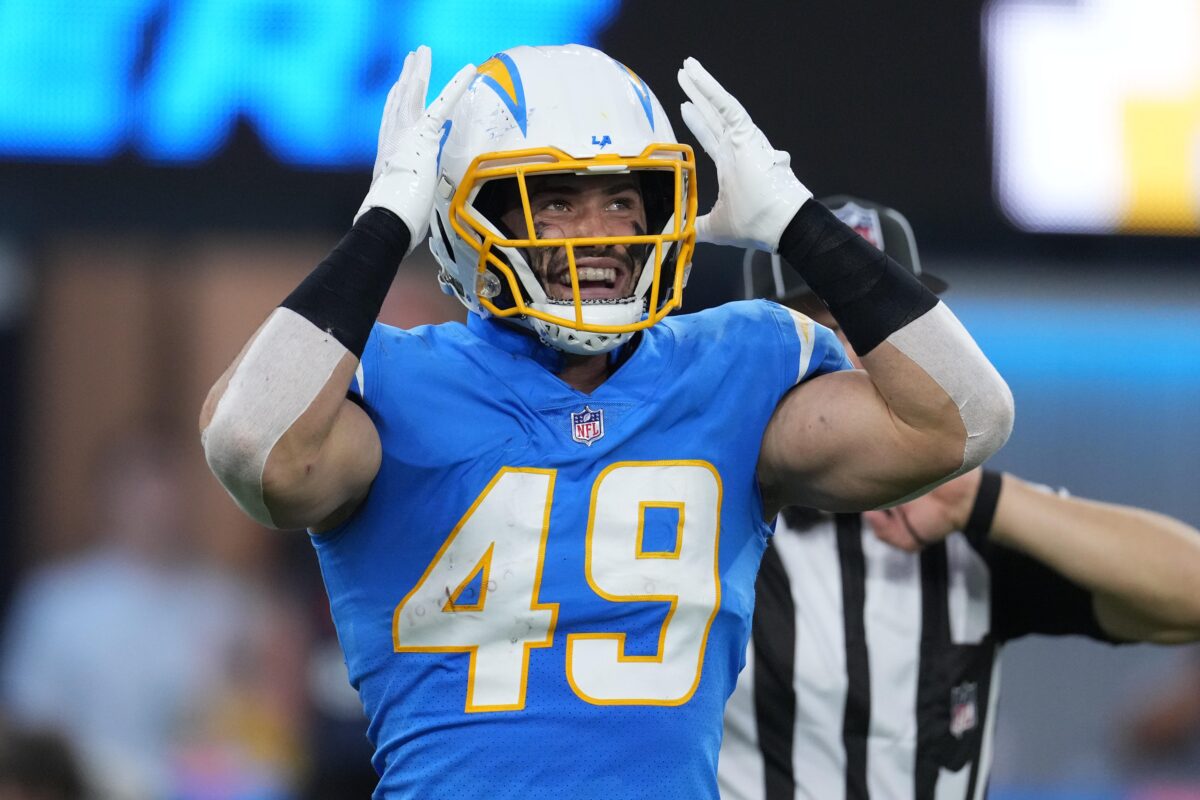The Chargers looked like a completely different run defense in the first game of the Jim Harbaugh era, holding the Raiders to just 71 yards on the ground as a team.
Instrumental in that effort was defensive tackle Poona Ford, who signed a one-year contract with Los Angeles in the offseason after playing a depth role for the Bills in 2023. Penciled in as a starter nearly by default because of the Chargers’ struggles on the defensive interior, Ford broke through with one of the best games by any defensive tackle in the NFL in Week 1 to aid Los Angeles’ defensive effort.
Let’s turn to the film to see how Ford made his impact.
Ford started strong on the opening drive of the season, pushing Raiders center Andre James into the backfield and forcing running back Zamir White to funnel his carry back inside on 3rd and 1. White’s cut brings him back into the path of Joey Bosa pursuing on the back side of the play. Bosa makes the play, forcing a Raiders punt.
On the next Raiders drive, Las Vegas lines up to go for a 4th and 1 from their own 41, bringing tight end Michael Mayer into the backfield in a pistol look. Ford beats James instantly off the snap and runs through Mayer, causing a pileup in the backfield that absorbs White and stuffs the Raiders. The field position set up the Chargers for the opening field goal of the game.
Ford initially gets driven off the ball by Raiders guard Cody Whitehair on this toss play in the second quarter as James pulls to support the block, but Ford gets past the double team and helps close the hole alongside cornerback Kristian Fulton to limit White to a gain of 2 on first down. Fulton slips a block from Mayer to help Ford make the tackle.
Coming out of the two-minute warning, the Raiders try to set up a screen to running back Alexander Mattison, but Ford reads the play after getting through the A gap without much resistance from James or Whitehair. Instead of chasing after Gardner Minshew, Ford runs with Mattison and tips the ball. As Mattison tries to corral it, Ford continues to play through his hands, eventually knocking the ball away and forcing the Raiders into a third down.
On a 3rd and 7 in the third quarter with the Chargers leading 9-7, Jesse Minter dials up a sim pressure with Junior Colson, Daiyan Henley, and Derwin James all walked up to the line of scrimmage. All three of them come on the blitz while Ford briefly engages with Andre James before dropping into a zone over the middle. The design prevents the Raiders from sliding the protection to either side. Henley jumps to get in the throwing lane of Minshew and Colson breaks into the pocket for a pressure, forcing a throwaway. Raiders kicker Daniel Carlson missed a 49-yard field goal on the next play, leading to a Chargers touchdown drive.
Zooming out to the field view for this 3rd and 10 from the Chargers 23, the seventh play of a pivotal Raiders drive early in the fourth quarter. Las Vegas runs a screen to wide receiver DJ Turner on the outside and has three blockers, including two offensive linemen, for three Chargers defenders in front of Turner. As he approaches the first down marker, however, Turner is chased down by Ford, stopping him short of the sticks and forcing the Raiders into a field goal attempt to make the game 16-10 rather than setting up a red zone first down to cut the lead to two.
Ford caps off his performance – and the game – with this tip drill interception just after the two-minute warning. Khalil Mack drives right tackle Thayer Munford Jr. back as Minshew tries to swing the ball to Mattison. Mack gets his hands up and bats the ball into the air right as Ford disengages from his blocker. Unlike most defensive tackles who let the ball fall into their chests, Ford extends outside his frame slightly to make the catch and gets to the ground to secure the victory.
Ford continuing his strong play will be instrumental in the Chargers fielding a top defense this season, as his Week 1 tape was some of the best Los Angeles has gotten from a defensive tackle in the last couple of seasons. Joey Bosa and Khalil Mack both looked impressive as well, setting up a potentially dominant Chargers front if all three can sustain their levels of production.
